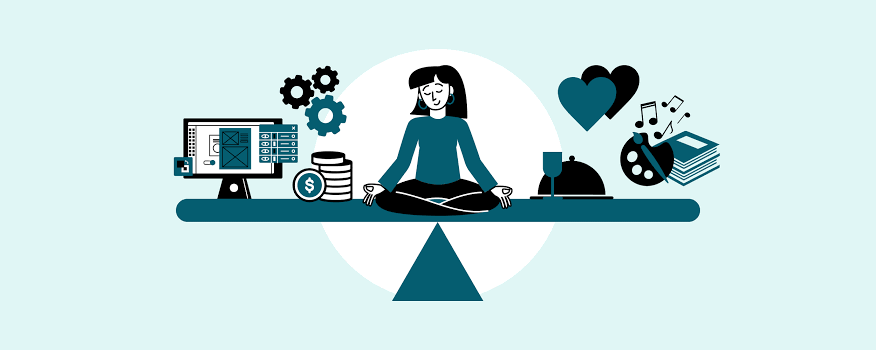In an era defined by hyperconnectivity, remote work, and the constant buzz of digital notifications, finding a healthy work-life balance has become more critical—and more challenging—than ever. As of July 2025, the boundary between work and personal life continues to blur for many professionals, especially those navigating hybrid schedules, gig-based work, or entrepreneurial ventures. Without a clear strategy, burnout, decreased productivity, and strained relationships are inevitable.
However, with conscious planning and a few intentional habits, it’s entirely possible to cultivate a lifestyle that honors both professional commitments and personal well-being. A healthy work-life balance isn’t about rigid time division—it’s about creating harmony that supports your goals, energy, and happiness.
Understand What Balance Means to You
The first step to building a sustainable work-life strategy is defining what balance actually looks like for your unique life. Everyone’s priorities and rhythms are different. For some, balance might mean working fewer hours to spend more time with family; for others, it may mean being fully present at work without bringing the stress home.
Ask yourself:
- What areas of my life are currently receiving too much or too little attention?
- When do I feel most energized, fulfilled, and at peace?
- What does an ideal day or week look like for me?
Once you have clarity, you can design a strategy that reflects your real values—not just societal expectations.
Set Clear Boundaries Between Work and Life
One of the biggest obstacles to work-life balance in 2025 is the absence of boundaries. With smartphones, emails, and messaging apps, many people are working around the clock without even realizing it. This constant accessibility can erode your ability to relax and recharge.
To reclaim your personal time:
- Establish a fixed start and end time for work each day.
- Disable non-urgent notifications outside work hours.
- Avoid checking emails or work chats during weekends or family time.
- Set up a dedicated workspace—physically or digitally—that you can step away from.
Communicate these boundaries clearly to colleagues, clients, and even friends who may blur them unintentionally.
Prioritize and Plan Your Tasks
Effective time management is essential for maintaining work-life equilibrium. When you fail to plan, your schedule often becomes reactive—filled with urgent demands that leave you drained and directionless.
Use these techniques:
- Create a weekly task list, categorizing activities by urgency and importance.
- Block time on your calendar for both work and personal priorities.
- Use the “2-minute rule” to quickly complete small tasks before they pile up.
- Avoid multitasking—focus on deep work in short, uninterrupted blocks.
Tools like Trello, Notion, or Google Calendar can help structure your time so that both work and rest get the attention they deserve.
Schedule Time for Yourself Without Guilt
Many people treat self-care as a luxury when it’s actually a necessity. Whether it’s a walk, meditation session, hobby, or simply quiet time with a book, these moments of pause refill your energy and make you more effective in all other areas.
Block out time for:
- Physical activity and exercise
- Sleep and relaxation
- Creative outlets or side interests
- Meaningful social connections
Protect this time as fiercely as you would a business meeting. Remember: taking care of yourself allows you to show up better for others.
Embrace the Power of Saying No
If you’re constantly overwhelmed, there’s a good chance you’re overcommitted. One of the most empowering habits for work-life balance is learning to say “no” to things that do not align with your values or priorities.
This includes:
- Declining extra projects when your plate is full
- Avoiding social obligations that feel draining instead of energizing
- Resisting the urge to always be available or responsive in real-time
Every time you say “no” to one thing, you say “yes” to something more important—like your mental health or quality time with loved ones.
Integrate, Don’t Just Separate
While setting boundaries is essential, some people thrive by integrating work and life in a way that feels more fluid and fulfilling. This doesn’t mean working during family dinner—but it may mean finding overlap where your work aligns with your passions or where your lifestyle supports your career.
For example:
- If you’re a parent working from home, schedule flexible breaks to connect with your child.
- If you’re passionate about fitness, start a podcast or blog related to health and wellness.
- If you enjoy travel, explore remote work opportunities that allow you to work while exploring new places.
Integration allows you to experience synergy, where work supports life and life enhances work.
Lean on Support Systems
You don’t have to balance everything alone. Support from friends, family, mentors, or colleagues can make a huge difference. Share your goals and boundaries with them so they can support—and even hold you accountable.
Also consider seeking professional help when needed:
- Therapists and coaches can provide strategies to manage stress and build structure.
- Accountability partners can help you stay focused on your personal time goals.
- Workplace HR teams or supervisors can help you explore flexibility and workload adjustments.
A strong support system helps reduce the pressure of trying to be everything to everyone.
Recognize the Warning Signs of Imbalance
Even with the best strategies, imbalance can creep in slowly. It’s important to stay mindful of warning signs that you’re tipping too far in one direction.
These might include:
- Constant fatigue or irritability
- Loss of motivation or purpose
- Feeling guilty during downtime
- Physical symptoms like headaches or insomnia
- Relationship strain or emotional withdrawal
If you notice these signs, pause and reassess. Your body and mind are sending signals that adjustments are needed.
Conclusion
Building a healthy work-life balance strategy is not a one-time achievement—it’s an ongoing practice that evolves with your career, family, and personal development. It’s about honoring both your professional ambitions and your need for joy, rest, and connection.
By setting boundaries, prioritizing effectively, scheduling self-care, and staying in tune with your needs, you create a lifestyle that is both productive and peaceful. In 2025 and beyond, the most successful people won’t be those who work the longest—but those who work with intention, live with balance, and thrive holistically.



